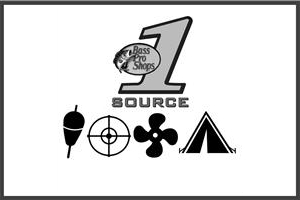
 Everybody wants to go fishing these days -- and I mean everybody. The trouble is most folks get some gear, licenses and so forth, head to the lake and get zipped, and the fishing tackle ends up in the August garage sale because they didn’t catch anything. Folks think they can just go out to the lake and catch a bucket full of bass, crappie or catfish. Well, they can’t do it consistently without the proper gear and some basic gamefish knowledge: fish movements, structure, lure presentation, live bait techniques, etc.
Everybody wants to go fishing these days -- and I mean everybody. The trouble is most folks get some gear, licenses and so forth, head to the lake and get zipped, and the fishing tackle ends up in the August garage sale because they didn’t catch anything. Folks think they can just go out to the lake and catch a bucket full of bass, crappie or catfish. Well, they can’t do it consistently without the proper gear and some basic gamefish knowledge: fish movements, structure, lure presentation, live bait techniques, etc.
What they need to do first is get the proper basic equipment.
Secondly, they should understand that the guys they see on TV shows do NOT catch all those fish in 30 minutes. It takes usually a full day to tape a show. A full day! And sometimes, we have to do some creative editing to make that work.
A buddy of mine and I went down to a lake in south Texas where the year before we smoked them! It was probably my best week of freshwater fishing ever on a public lake. But this trip we fished from early morning to late afternoon and caught … NOTHING. Not even a thump. The point is that fishing is unpredictable, and there will be days when the fish don’t bite.
To make things more predictable, a fisherman needs to have at least the basic equipment and a working knowledge of how to fish and what to expect.
The basic equipment:
Two rod and reels. These can be baitcasting or open-face spinning. For the kids, get spincast reels. These need to be 5.5- to 6-foot rods. The reels need to be loaded with 12-pound test line, and in some cases, 14- to 17-pound test. The spincast should be loaded with 6-pound test.
A tackle box. Any box will do to start with; the fisherman will determine his preference as time goes by, but to begin with, get a multicompartent box that has drawers. These are available at Bass Pro Shops for a reasonable few dollars. Check the website or catalog for specials. I prefer a number of small compartment boxes that hold lures by category: crankbaits, worms, topwaters, spinnerbaits, hooks and sinkers, etc.
Lures. There are thousands of lures -- literally thousands. I fish the Pradco family brand names, for they have been my sponsor for about 30 years. If they stopped being my sponsor, I would still fish their baits … they are that good. I think an angler needs crankbaits, topwaters, minnow-like lures, spinnerbaits, a selection of plastic worms in different colors and sizes, hooks and slip sinkers, buzzbaits, spoons and a variety of crappie baits such as Road Runners. It’s helpful to have fish attractant sprays to mask human smells and attract fish to the lure.
Brand names for lures would include Bomber, Smithwick, Heddon, Rebel, Cordell, Blakemore Road Runners and any of the Pradco softbait brand names. Your Bass Pro Shops catalog has a huge selection of these lures in all colors. Check them out, but stay with the basic colors, including yellow, white or silver, frog patterns, crawfish patterns, chartreuse, reds, greens and any combination of these colors.
Fishing Line. There are a lot of fishing lines out there, but I think to start out, buy 12- to 17-test monofilament. Braided line is excellent, but you really need to know how to cast well before you tackle braided line. I use Hi-Seas Monofilament . For crappie, I use 6-pound and under depending on the cover.
Boats. Initially, buy a small boat first to help you determine what you most want from a boat. I use Tracker aluminum bass boats, usually in a 17-foot version with a 75-hp Mercury. Fiberglass boats are another item; I have been with Ranger fiberglass boats for more than 30 years. I’ll go into depth on boats at a later time.
![]()
Buy a good locator for your boat -- one that has good definition and shows all sizes of fish and features the side view. Humminbird has been my sponsor from day one.
Trolling motor. Buy one that is strong enough to handle your boat in winds, but not one that runs the battery down quickly -- 12.24 volt, 80-pound thrust would be good.
Outboard. Get one that is suited to handle the size of the boat you use. Don’t go gunning for a big motor at first until you learn how to handle a boat. I have been using Mercury for more than 30 years. No regrets.
Battery. Get long-life batteries that last all day and then some and are economical. I use Duracell.
Maps. Get maps of the lakes you will fish. No more needs to be said. You need to know where you’re going and how to get back to where you started from.
And last but not least … a Bass Pro Shops Catalog.
Good luck!
by Jimmy Houston
- 17745 views

